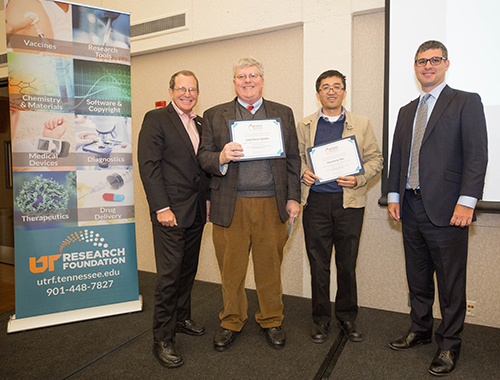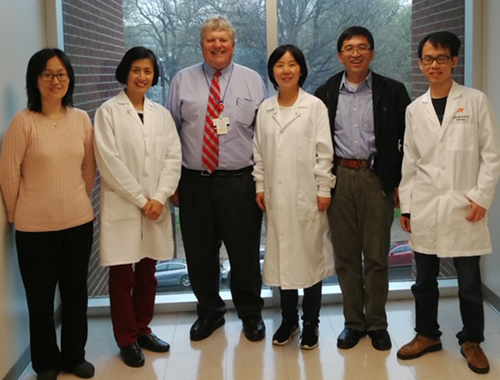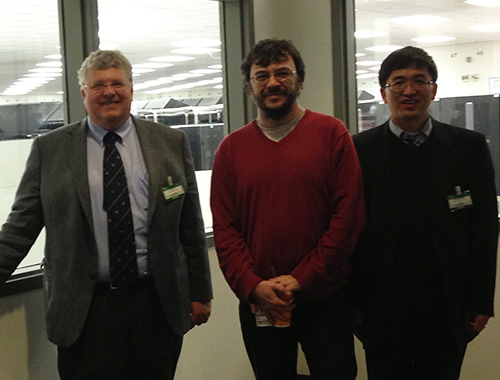 The Clinical Investigator: A Path to Improving Patient Outcomes
The Clinical Investigator: A Path to Improving Patient Outcomes
It’s not often the same doctor who treats patients in a clinical practice also conducts scientific research in a laboratory. But then again, L. Darryl Quarles isn’t a typical doctor.
Darryl is a physician-scientist, or as he puts it, “both a clinician and investigator.” He’s currently the UTMG Endowed Professor and Division Director of Nephrology in the Department of Medicine at the University of Tennessee Health Science Center in Memphis. When not engaged in clinical work with patients, Darryl can be found in his lab. His research focuses on bone metabolism and its impact on the kidneys and other organs – a highly specialized area of expertise that has earned funding by the National Institutes of Health (NIH) throughout his academic career, spanning over 35 years.

One of the major discoveries from Darryl’s research is that bone is an endocrine organ that participates in a novel bone-kidney axis, regulating mineral metabolism. His laboratory uncovered that bone produces a hormone, fibroblast growth factor 23 (FGF23), that communicates with the kidneys to regulate phosphate and vitamin D metabolism in the body. Elevated FGF23 levels cause rare disorders, such as hereditary hypophosphatemia in which there are low levels of phosphate in the blood, as well as a tumor-induced softening of the bones called osteomalacia. In addition, as people lose kidney function, their bodies adapt by increasing production of FGF23, which initially helps maintain phosphate balance, but can become maladaptive, leading to a host of negative complications. This discovery started Darryl on the path to developing new therapeutics to prevent the adverse effects of FGF23.
The next significant milestone for the research around FGF23 took shape as a result of a greater emphasis on translating our understanding of diseases into treatments. Inspired by an NIH conference on precision medicine, Darryl decided to shift his lab work from the mechanisms that cause diseases to focus on developing small molecules that target these mechanisms. This refocus coincided with a fortuitous encounter with the late David Milhorn, then UT Vice President for Research, Outreach and Economic development and advisor to Oak Ridge National Laboratory (ORNL), on a visit to Memphis to promote collaboration between the UT Knoxville and UTHSC campuses. During the visit, Darryl met with David and Jerry Smith, Oak Ridge scientists accompanying him, who told of their efforts to use computational approaches for identifying new lead compounds, the starting points for developing drugs.


With the stars – and team of experts – aligned, Darryl began a partnership with UT Knoxville/ORNL and the UTHSC College of Pharmacy to work on computational drug discovery. Using the FGF23 target, the team continues to work with ORNL’s supercomputers and technology to identify potential compounds that bind with FGF23 and antagonize its actions. The team has made great success in optimizing these FGF23 inhibitors as new drugs for the treatment of hereditary and acquired disorders of FGF23 excess.
This innovative approach to renal therapeutics and the composition of matter the partners developed is attracting commercial attention from the biotech industry. Concurrently, the University of Tennessee Research Foundation (UTRF) is leading the patent prosecution and guiding Darryl and his colleagues through the commercialization process, which includes securing a partnership with a major biotech company.
“These therapeutics hold the potential to reshape medical treatment and outcomes for sufferers of renal diseases, and UTRF exists for opportunities exactly like this: taking innovations from the research lab and putting them in the hands of doctors and patients,” said UTRF Licensing Associate Stefan Schweizer.
The successful partnership surrounding FGF23 paved the way for other projects as well. Darryl is currently working to develop a compound that activates a mechanosensing complex in bone, useful in preventing bone loss in situations of disuse, such as when NASA astronauts spend significant amounts of time in zero-gravity space. In a separate research effort, he seeks to develop a novel treatment for type 2 diabetes that targets a key nutrient sensing G-protein-coupled receptor.
Darryl’s research on bone and mineral metabolism and calcifications began in his days as an undergraduate student. While obtaining his BS degree in Zoology at Duke University, he helped in the lab studying the calcification of mollusk shells with Dr. Karl Wilbur. He then attended the University of Alabama-Birmingham for medical school and residency before returning to Duke for a fellowship in Nephrology. After 22 years on the Duke faculty, rising to full professor, Darryl transitioned to the University of Tennessee Health Science Center in Memphis.
“I’ve been in the right place at the right time,” Darryl said, “both during my years at Duke and now here at Tennessee. Very few places can achieve what we’re doing here. It’s rare that scientists like me have access to the capabilities offered by innovative computational methods and medicinal chemistry approaches to develop “drugs” for almost any disease with an identified protein target. We’re actually making something to turn around the outcomes of patients. I think the programs that we have developed at UTHSC/UT Knoxville/ORNL place us at the forefront of the next stage of precision medicine.”